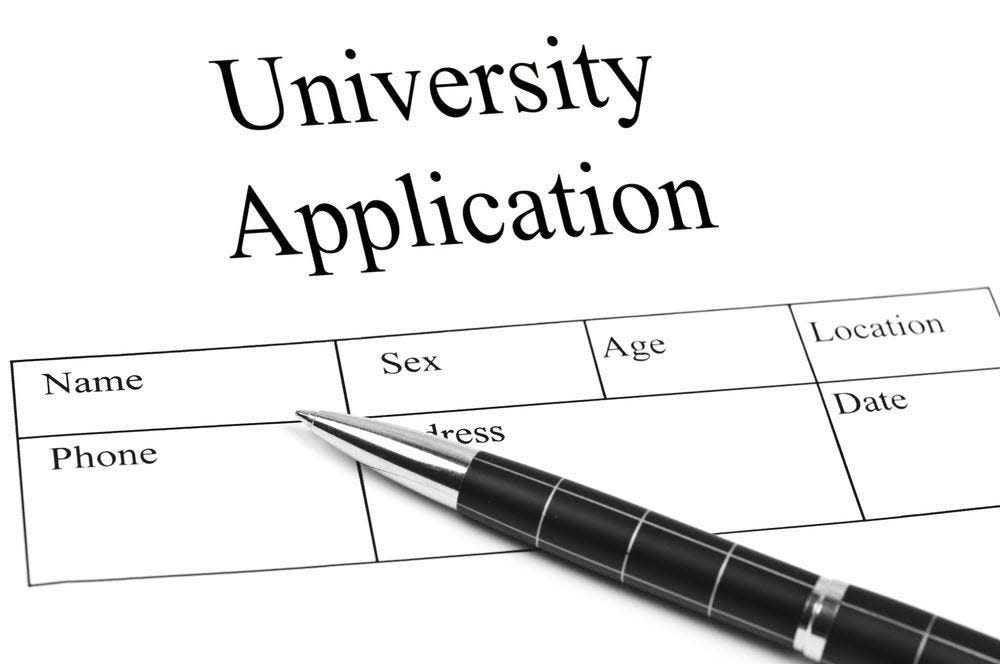College planner Dale Price: Looking at 2022 admissions trends

June is traditionally a month of beginnings. It’s the wedding month, the graduation month and the first month of summer, both weather and vacation-wise.
For high school sophomores going into junior year, it’s the beginning of a year of search for a future that includes college applications.
Every year, the college application process becomes more difficult and confusing. Every year, competition for prime educational opportunities gets tougher. Every year, the variables determining success in the process -- acceptance by the college or university of our choice – become more confusing.
But they can be navigated.
Applications are skyrocketing
Probably the biggest factor making the college admission process more difficult is the sheer number of applications in the system. While many schools used to have acceptance rates well over 30%, the massive and growing numbers lower that rate to far less in many schools.
The “click to apply” websites oversimplify the process, even if it may create falsely inflated application numbers. Add to that the number of prior year applicants who took a “gap year” for whatever reason, and the acceptance rate falls even further.
The University of Texas received a record 66,000 applications for the 2022 school year. They accepted only 19,000, 17,000 of which were in-state residents. That is a mere 29% acceptance rate. It’s expected to get worse with the number of applications rising.
Test-optional applications
A huge factor making navigation of this process more difficult is something completely foreign to most parents: test-optional universities. A large number of colleges, in their desire to broaden the applicant base in a time where many students have been unable to attend test centers due to lockdown, now take applications without them.
However, not all schools or states are “test-optional.” In fact, Georgia and Florida are not, and so is, not surprisingly, MIT.
Regardless, “test optional” does not mean “test blind.” In other words, good test scores will still be a factor in the decision process. At the same time, the student who is not necessarily a good test taker can apply without results and still have a strong chance with other factors being considered.
Longer waitlists than ever
A factor stirring the application pot is that it doesn’t end with a rejection or acceptance. Sometimes, there’s a waitlist and those waitlists have gotten longer and longer in a desire by the university to ensure that their rolls are filled, every seat taken. This means that while a student may get an acceptance from one college, they will hold off on accepting the acceptance, holding out for a decision from a preferred college. The students on the waitlist . . . wait. This is a circular circumstance, a Catch-22 of sorts.
Business majors are the new pre-med
Given everything mentioned so far, how does a college-bound student increase their chances of getting into the college of their choice? What changes the odds from 1 in 66,000 to 1 in 19,000? Or at least at the top of the waitlist?
One bright spot is that the field of preferred majors has grown beyond the science-related STEM studies to include business. This spreads the concentration of applications over more majors, beyond engineering, pre-med and the standard sciences. UT’ McCombs School of Business has become one of the most popular in the country.
Even for the favorites, remember that while tests may not be required, the application still has to have something that makes it look good. This is normally what is called “fit-to-major.” In other words, the extracurriculars should reflect a true interest in the major. A student in Robotics Club will get a positive bump for engineering school. This policy has been instrumental in raising “yield rate” or the rate of yesses to an offer of admission.
Of course, one of the best ways to really boost the odds is to really choose a balanced set of schools for your target list. Make sure that you have selected six to eight schools that are not just highly desirable and popular, but maybe some that are mid-range on the scale, but truly reflect your own interests. And then fall in love with those choices, putting your effort in making your applications really shine for those colleges.
Everything is fair game in the high stakes world of college admissions. As an incoming freshman, your summers are scrutinized, activities, letters of recommendation, and, yes, your test scores. The total package fitting into this admissions puzzle is the key to success.
Dale Price, MBA is the founder and owner for Access College America.

This article originally appeared on Austin American-Statesman: College planner Dale Price: Looking at 2022 admissions trends

